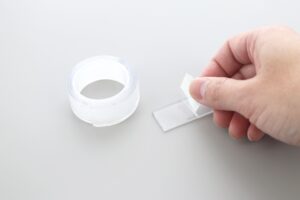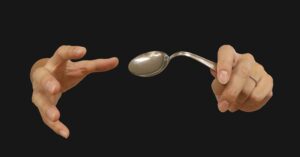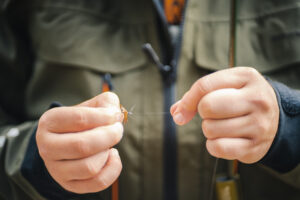To what extent can Accessory-Carabiners-Clips and Hooks be used? We tested their strength with Force Measurements.
- We used the Tensile test to measure deformation and braking strength.
- The test results showed approximately 500 to 850 N in the vertical direction and 620 to 1050 N in the horizontal direction.
- The Accessory-Carabiner-Clips and Hooks are mainly designed for clipping and hooking (small) accessories. They are not intended for use as personal protective equipment (PPE) or in climbing and mountaineering activities.
*Non-certified Carabiner Clips and Hooks for Accessories: Non-certified Carabiners do not meet the minimum safety requirements for climbing and mountaineering practices, and they are not Personal Protective Equipment (PPE).
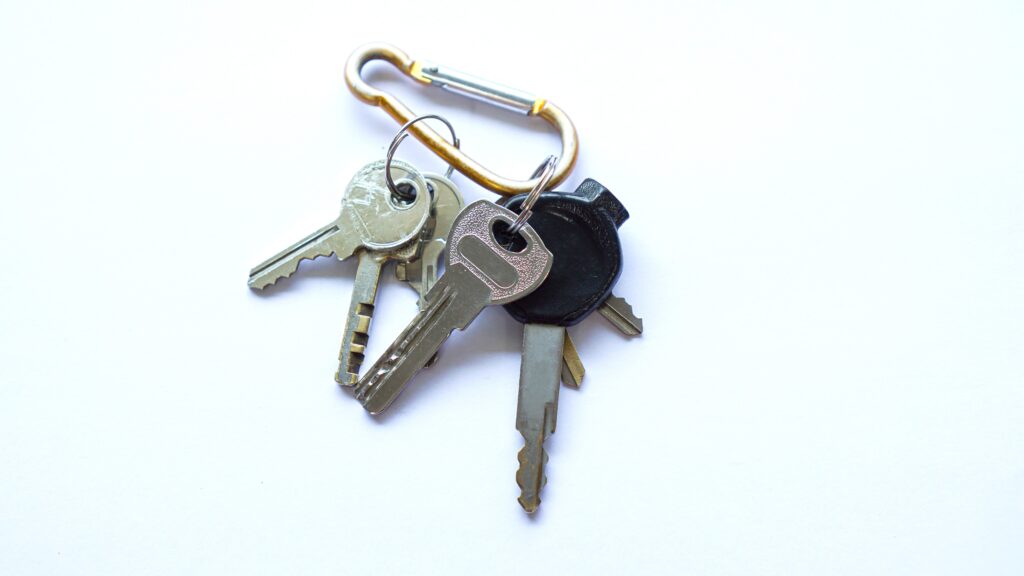
How to Measure the Carabiner Strength?
With reference to the Certified Climbing Carabiner with the Load-bearing Capacity engraving,we have investigated the strength of the Accessory-Carabiner-Clips.

Climbing Carabiners are certified as Personal Protective Equipment (PPE) and must meet UIAA and CE safety standards. They are rated for strength, and the capacities are engraved on the spine in kN (kilo-Newton): –
- Maximum load capacity along the major axis (Vertical Direction)
- Maximum load capacity along the Minor axis (Horizontal Direction)
- Maximum load capacity with Open Gate along the major axis (Vertical Direction)
Referring to the Certified Carabiner Load capacity measurements, we have checked the strength of the Accessory-Carabiner-Clips.
Note: Certified Climbing Carabiners are engineered as critical Personal Protective Equipment (PPT) to withstand the extreme momentary forces generated during a fall or impact. Climbing Carabiners are tested to meet UIAA standards, typically 18 to 25 kN or higher in the Major Axis direction, to safeguard the user. Check the load ratings engraved on the carabiner spine and buy from a trusted outdoor gear retailer. Your safety is your responsibility: Follow the proper safety guidelines.
Measuring the Strength of the Accessory-Carabiner-Clips
Now that the measurement process has been decided, we measure strength by using a force gauge.

The sensor is integrated with the measuring shaft of the force gauge, and the force applied is displayed. The use of the test stand allows for applying a stable force for accurate measurement even with large forces. Note: This product configuration allows measurements up to 2500N.
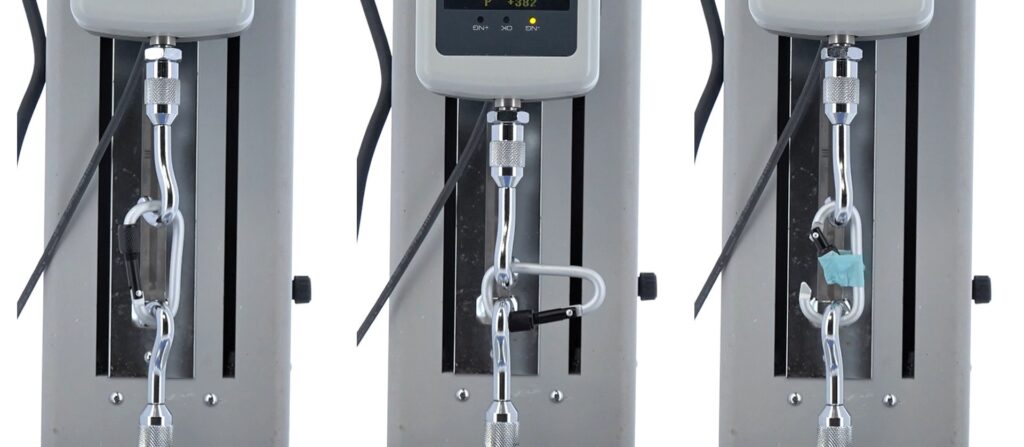
2 types of Aluminum Accessory-Carabiner-Clips, Samples A and B were used as samples.
Attach a small hook to the measuring shaft and apply the force vertically up and down.
Note: This method is not specified by UIAA Standard.
Results as follows: –
| Vertical Direction | Horizontal Direction | Open Gate (Vertical Direction) | |
|---|---|---|---|
| Sample A | 843N | 1052N | 828N |
| Sample B | 503N | 624N | 494N |
– The Values are at the time when the deformation is identified.
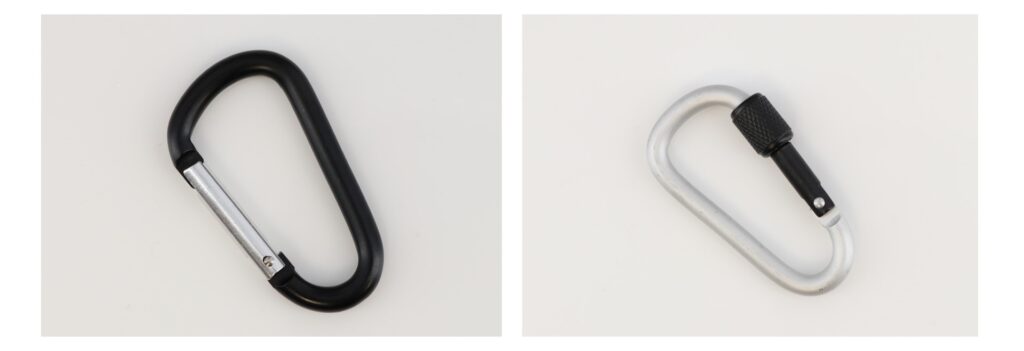
The results of the tensile test show that the accessory carabiner clip samples measured can withstand a vertical force of approximately 50 kg with correct use.
The Different Types of Carabiners with Different Functions
The results of this measurement show that different types of Carabiners must meet various functions. Climbing and Mountaineering Carabiners with PPT have distinct functions from Accessories Carabiners. Non-load-bearing carabiners are not for climbing and mountaineering. They are not certified as personal protective equipment (PPE) against falling and crushes. Accessories Carabiners are decorative metal ornaments often used as key chains or hanging chalk bags, etc., and their strength is sufficient for general accessories such as key chains.
This article introduces how to proceed with the Strength Test using force-measuring instruments. In this case, we used an Accessory-Carabiner Clip as a sample specimen. Please note that this test is not for checking the Carabiner Strength specifications.
IMADA’s website has several measurement case videos related to tensile and strength tests. In addition, Force Channel also publishes various articles for your reference.



